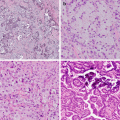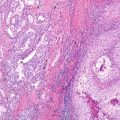© Springer International Publishing AG 2018
Philip T. Cagle, Timothy Craig Allen, Mary Beth Beasley, Lucian R. Chirieac, Sanja Dacic, Alain C. Borczuk, Keith M. Kerr, Lynette M. Sholl, Bryce Portier and Eric H. Bernicker (eds.)Precision Molecular Pathology of Lung CancerMolecular Pathology Libraryhttps://doi.org/10.1007/978-3-319-62941-4_22. Lung Cancer Epidemiology and Demographics
(1)
Department of Pathology and Genomic Medicine, Houston Methodist Hospital, Houston, TX, USA
(2)
Department of Pathology and Laboratory Medicine, Weill Cornell Medicine, New York, NY, USA
Keywords
Lung cancerCancer deathsCancer riskTobaccoCigarettesSmokingThe leading overall cause of cancer-related death in the United States [1] and the global population [2] continues to be lung cancer. Globally, it is the leading cause of cancer death in men and the second leading cause in women (second to breast cancer). However, in developed countries (including the United States), lung cancer mortality has surpassed breast cancer. Worldwide, nearly 1.6 million deaths were attributed to lung cancer in 2012 (1.1 million in men and nearly 500,000 in women) [2]. In the United States, 27% of cancer deaths in men and 26% in women are attributed to lung cancer [1], with 158,080 estimated deaths expected in 2016. This number surpasses the combined total estimate of cancer mortality for the next three most common causes of cancer death in men and women residing in the United States (men: prostate, colon and rectum, pancreas; women: breast, colon and rectum, pancreas) [1]. Lung cancer continues to be one of the most lethal forms of cancer with global 5-year survival rates ranging from around 10 to 20% [3] despite improvements in therapy and surgical technique. The net 5-year survival rate in the United States is around 19%, with only liver cancer having a worse 5-year survival [3].
Lung cancer incidence is tightly linked to tobacco use trends in a given region [4]. The differences in lung cancer rates seen between men and women correlate with historical differences in onset and cessation of tobacco use between the sexes. In relative terms, countries where tobacco use peaked early (such as the United States, the United Kingdom, and Denmark) have seen decreasing lung cancer rates in men; rates in women have leveled off [5, 6]. Countries where tobacco use peaked later (e.g., Spain and Hungary) are now seeing a decrease in lung cancer among men but an increase in women [5]. In countries where tobacco use is currently on the rise or is at its peak (China, Indonesia, some African countries), lung cancer rates are expected to continue to rise [5, 7, 8].
Undoubtedly, the largest risk factor for lung cancer development is cigarette smoking [9]. Cigar and pipe tobacco increases risk as well. However, only around 10% of tobacco smokers develop lung cancer, implying other factors exist with regard to cancer development. In tobacco smokers, chronic obstructive pulmonary disease (COPD) is the greatest risk factor for lung cancer development; this may indicate activation of common signaling pathways by tobacco smoke for both diseases [10]. The latency period, total amount of exposure or “pack years” (pack years equals the number of packs smoked per day X number of years smoked), and enzymatic differences in the metabolism of tobacco smoke carcinogens and DNA repair are factors in cancer pathogenesis as well [11, 12]. The risk of developing lung cancer remains elevated in a former smoker for decades after smoking cessation. The risk does gradually decline compared to those smokers who do not quit [12–15].
Stay updated, free articles. Join our Telegram channel

Full access? Get Clinical Tree





